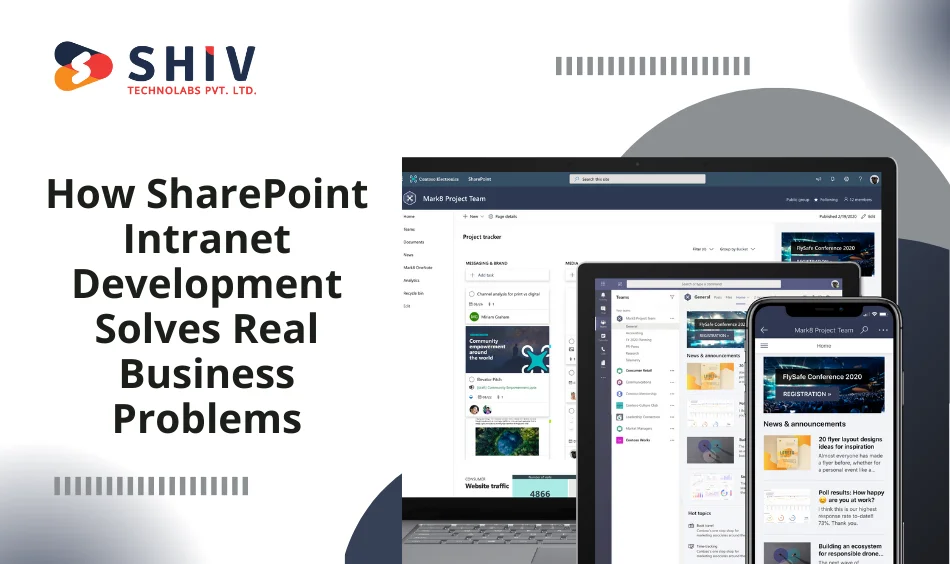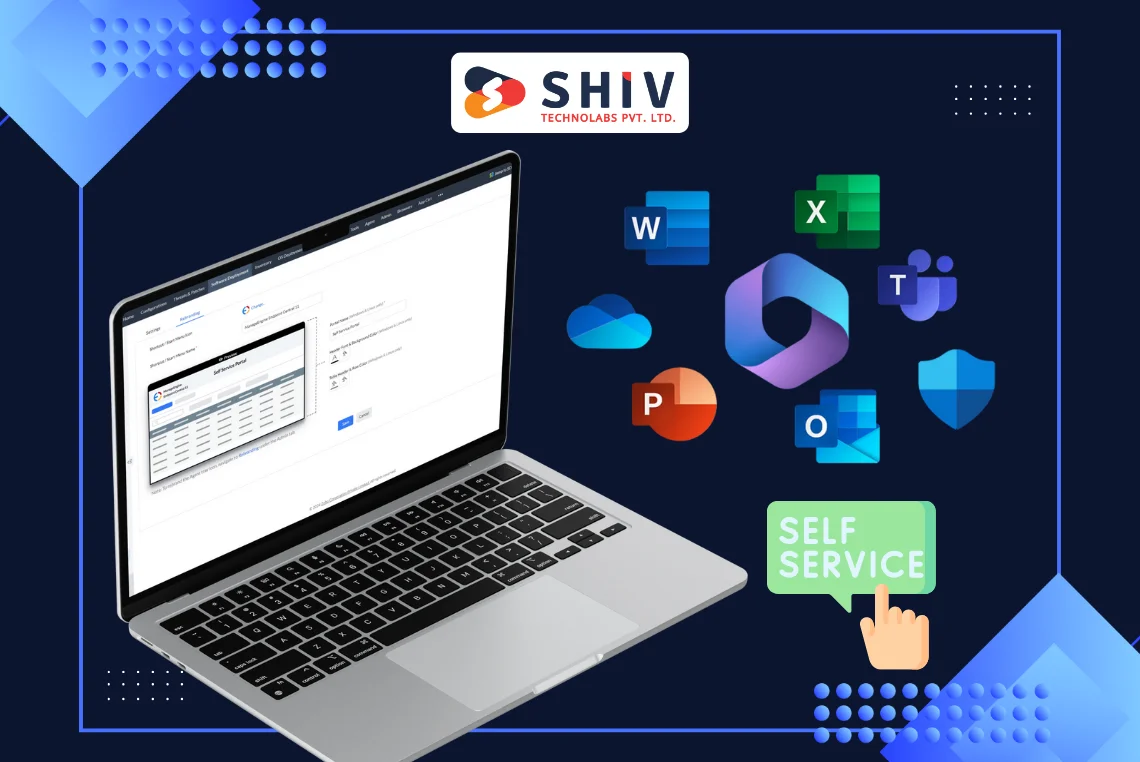Table of Contents
A SharePoint intranet can become the central nervous system of your business operations. When built with intention, it supports collaboration, communication, and file management in ways that make work easier for every employee, from HR to project managers to the leadership team.
But here’s the thing: building a SharePoint intranet isn’t just about setting up a few pages and uploading files. It’s about creating a space that reflects how your people work, where they go for answers, and how they interact with each other across locations.
This article will walk you through the key components of SharePoint intranet development. If you’re thinking about building or restructuring your digital workplace, this guide will help you make informed decisions.
What Is a SharePoint Intranet and Why Does It Matter?
A SharePoint intranet is a private, organization-wide platform built on Microsoft SharePoint. It helps teams communicate, access information, collaborate on documents, and stay aligned across departments.
While some companies rely on email threads, shared drives, and disconnected tools, SharePoint offers a centralized system that brings these elements together under one secure roof. This setup simplifies daily workflows and improves access to the right content at the right time.
Whether hosted on SharePoint Online (part of Microsoft 365) or a self-managed server, a properly built intranet can serve as a single source of truth across your company
Also Read: Odoo Vs. Microsoft Dynamics
How SharePoint Intranet Development Solves Real Business Problems

If you’re wondering what sets SharePoint apart from older intranet solutions, the answer lies in how it addresses actual challenges businesses face today:
- Information gets buried in inboxes
- Teams waste time hunting down files
- Employees aren’t sure where to find resources like HR forms or project dashboards
- Internal communication is inconsistent or siloed
A well-planned SharePoint intranet fixes these issues by giving employees a go-to portal where everything they need is organized and accessible—from company announcements to team-specific documents.
Let’s break this down further.
Key Features That Make a SharePoint Intranet Work
When developing a SharePoint intranet, the goal is to support how your teams operate, not force them to adapt to rigid templates. Below are the essential features you should include, with context on why each one matters:
# Home Page With Personalized News and Navigation
Your intranet’s home page should greet users with updates tailored to their department or role. A clean design with quick links to tools, documents, and team hubs helps people find what they need fast.
# Departmental Hubs
Each team or function (like HR, Finance, IT, Marketing) should have its section with relevant forms, updates, calendars, and shared documents. This structure reduces clutter on the homepage and encourages ownership of content.
# Document Libraries With Version History
These libraries act as shared filing cabinets, allowing teams to collaborate on the same document while keeping track of edits and older versions. Permissions can be applied to restrict sensitive content.
# Employee Directory with Search Filters
Instead of digging through emails to find someone’s contact info, a built-in directory helps staff search by name, title, department, or location.
# Mobile-Ready Access
Not every employee works from a desk. Field teams, sales reps, and executives benefit from intranet pages that display properly on mobile phones and tablets.
# Alerts and Announcements
Send time-sensitive messages through pop-ups or notification bars to keep employees informed of urgent changes, policy updates, or upcoming events.
# Search That Works
A poor search experience causes frustration. Tagging documents with metadata (like department, topic, or date) improves findability and saves time.
Want to know how Zoho Payroll can Lower Costs? Check out our blog!
SharePoint Intranet vs Traditional Intranet Portals
If you’ve worked in an organization with a legacy intranet, you already know the problems: outdated content, confusing navigation, and no easy way to collaborate. SharePoint addresses these issues through:
- Self-managed content: Team leads can update pages without needing help from IT.
- Integration with Microsoft 365: Teams, Outlook, OneDrive, and Planner all connect natively.
- Role-based content targeting: Users see content relevant to their department, role, or region.
- Document co-authoring: Multiple users can edit Word, Excel, or PowerPoint files simultaneously.
Traditional intranets were often static and top-down. SharePoint gives teams the flexibility to build out dynamic sections based on how they work.
Structuring Your SharePoint Intranet for Scalability

A scalable intranet begins with a clear, logical structure. Start by identifying top-level areas and breaking them into subpages or team hubs.
For example:
Home
- Company News
- Events
Departments
- HR (forms, benefits, policies)
- Finance (expense reports, approvals)
- IT (support requests, software access)
Projects
- Active Projects
- Archived Projects
Knowledge Base
- How-tos
- SOPs
- FAQs
Each section should have an owner who’s responsible for keeping content current. Define who can publish, who can view, and who approves updates to maintain consistency.
Also Read: SharePoint Customization Techniques
Add-ins That Make Your SharePoint Intranet Easier to Use
No rule says your intranet has to look boring or feel clunky. With the right add-ins, you can turn a standard SharePoint intranet into something employees enjoy using.
Here are a few popular ones and what they do:
📌 Slider Banner
Highlight events, achievements, or internal campaigns with rotating banners on your homepage.
📌 Metro Tiles
Replace text-heavy menus with visual tiles that direct users to major areas of the site.
📌 News Ticker
Display live scrolling announcements across the top of the page for time-sensitive updates.
📌 Knowledge Management
Organize FAQs, manuals, and internal training content in a searchable database.
📌 Polls and Feedback Forms
Gather feedback, votes, or ideas directly from employees.
📌 Custom Forms
Automate HR requests, IT tickets, or onboarding forms using built-in form builders or tools like Power Automate.
These add-ins aren’t just window dressing—they improve functionality and make navigation more intuitive.
Best Practices That Keep Your Intranet Useful (Not Forgotten)
Even the best-looking intranet fails if it’s not kept fresh or if no one knows how to use it. Follow these practices to keep yours relevant:
- Train department editors so they can manage their content
- Schedule quarterly audits to archive or update outdated files
- Promote your intranet during onboarding so new hires rely on it from day one
- Send regular newsletters with “What’s New” highlights
- Monitor usage metrics and search terms to see what employees are looking for (and struggling to find)
When your intranet becomes a daily habit, adoption takes care of itself.
Measuring Success: How to Know Your Intranet Is Working
You can’t fix what you don’t measure. Here’s how to track your SharePoint intranet’s performance:
- Daily and weekly usage trends
- Time spent per visit
- Pages with the highest and lowest engagement
- Top internal search queries (and how well they’re being served)
- Feedback from employees on usability or gaps
- Time saved on routine tasks (like document access or form submission)
Tracking these metrics helps you fine-tune the experience and, when you hire SharePoint developers, demonstrate the business value of the platform to leadership.
Mistakes to Avoid in SharePoint Intranet Projects
Let’s keep it real: intranet projects can go off the rails. Here’s what we often see go wrong:
🚫 No clear goals Teams jump in without defining what problems the intranet is solving.
🚫 Overcomplication Too many menus, too many layers—users get lost.
🚫 No content governance Pages go stale. Links break. Information becomes unreliable.
🚫 Ignoring search configuration If people can’t find things quickly, they won’t use the platform.
🚫 Treating it like a one-time project Intranets need ongoing maintenance, just like any other product.
Avoid these, and your SharePoint intranet will have a far better shot at becoming a critical tool, not an afterthought.
Shiv Technolabs: Your SharePoint Intranet Development Partner
At Shiv Technolabs, we don’t just install SharePoint—we build it around your people, your goals, and your operations. Our SharePoint intranet development services include:
- Planning and strategy based on your workflows
- Design that reflects your company’s branding
- Document structure and migration
- Permission-based access setup
- Integration with Microsoft 365 tools
- Workflow automation
- Training and post-launch support
Whether you’re building from scratch or improving what you already have, our SharePoint development services will help you create an intranet that supports real business outcomes.
Final Word
Your SharePoint intranet can do more than store files. It can bring people together, reduce time wasted on redundant tasks, and give your teams a better way to stay aligned.
The key is planning your development carefully, staying focused on how people work, and committing to long-term improvement—not just a flashy launch.
Ready to build an intranet that works? Contact Shiv Technolabs today.






















